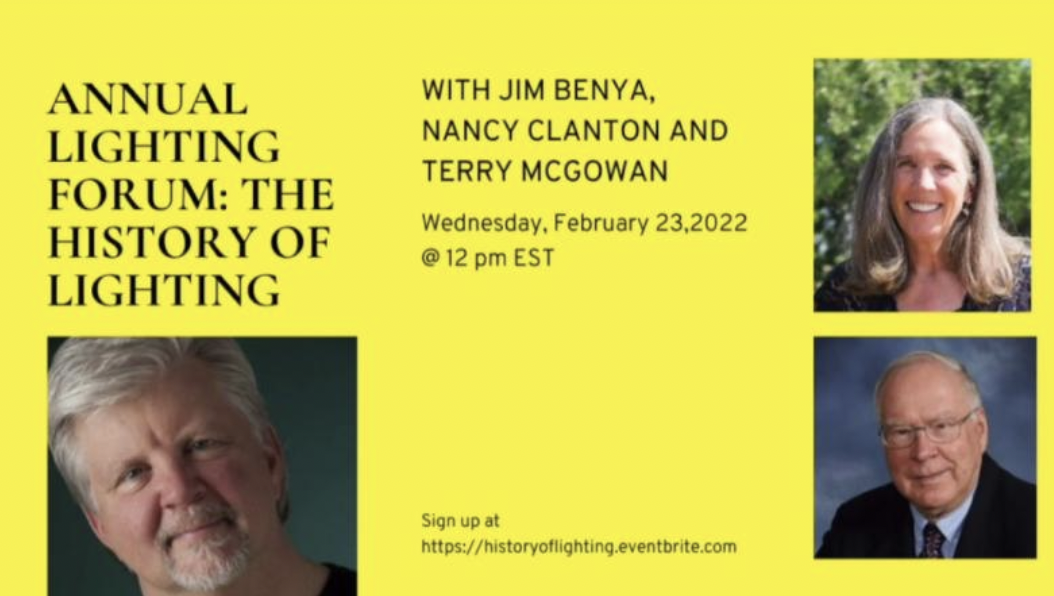 The National Lighting Bureau held a panel discussion yesterday titled “The History of Lighting,” with experts Jim Benya of Benya Burnett Consultancy, Nancy Clanton of Clanton Associates, and Terry McGowan representing the International Dark Sky Association and the American Lighting Association. The session opened with a brief rundown of the distinct historical eras of lighting. For most of our species’ history, the flame was the only controllable light source. Then, the introduction of the incandescent bulb revolutionized our ability to control and utilize light. As Terry explained, Edison found a way to subdivide light, saying, “He made something that was small and compact and that had a lot of applications in a lot of spaces.”
The National Lighting Bureau held a panel discussion yesterday titled “The History of Lighting,” with experts Jim Benya of Benya Burnett Consultancy, Nancy Clanton of Clanton Associates, and Terry McGowan representing the International Dark Sky Association and the American Lighting Association. The session opened with a brief rundown of the distinct historical eras of lighting. For most of our species’ history, the flame was the only controllable light source. Then, the introduction of the incandescent bulb revolutionized our ability to control and utilize light. As Terry explained, Edison found a way to subdivide light, saying, “He made something that was small and compact and that had a lot of applications in a lot of spaces.”
The incandescent era was followed by the era of arc lighting, characterized by low pressure, high intensity light sources, such as fluorescent and HID bulbs. The next era, referred to as the “energy era” by Jim, had more to do with reinventions of old technologies rather than the introduction of new technologies. Lighting became more efficient and more diverse in its applications. Finally, we reached the present era, with the introduction of LEDs and all the ways they have transformed our industry.
After briefly outlining this history, the discussion quickly turned to the present. What can be learned from our industry’s history? What mistakes have been made in the past that we need to avoid in the future? They all agreed that the industry has done a poor job of reaching out to the public. For too long, the lighting industry has lived in isolation. Nancy remarked, “I can’t believe how little the public knows about dark skies and shielding. Everyone is attracted to simply brighter lights.”
The panel emphasized that educating the public and the consumer is key If we want to tackle growing issues like light pollution; we need to do a better job of explaining concepts like contrast and spectrum. Because LEDs are so efficient, light output has increased while costs have decreased. But, more intensity is not always better. We need to use natural light as a guide to create healthy and effective artificial light.
It is also important to understand lighting from different perspectives. Jim mentioned his transition from electrical engineering to lighting and how it was helped by his exposure to theatre. “The cross-pollination is critically important,” he stated.
Finally, the panelists discussed the importance of certification and the pros and cons of its requirement in our industry.
A brief Q&A session followed the panel presentation. The panelists discussed lighting education and texts that they have found useful. They elaborated on the problem of light pollution and what can be done to mitigate the problem of too much light at night. They touched on the idea of personal lighting and again emphasized the importance of natural light. And, they were asked about the obsolete “foot candle” and suggested a need for better lighting metrics that measure all aspects of light, not just intensity.
Go Deeper: The full discussion, including the Q&A session, can be found here.



